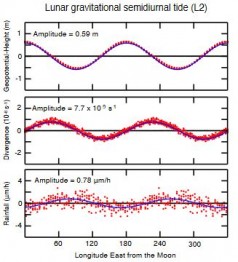With California in its fifth year of severe drought and many western states experiencing another year of unusually dry conditions, plants are stressed. Agricultural crops, grasses and garden plants alike can get sick and die when factors such as drought and excess sun force them to work harder to survive. Now, plants can better tolerate drought and other stressors with the help of natural microbes, University of Washington research has found.
Read more at UW Today »Ocean forecast offers seasonal outlook for Pacific Northwest waters
A new tool developed by researchers from the College of the Environment and the National Oceanic and Atmospheric Administration creates seasonal outlooks for Pacific Northwest waters.
Read more at UW Today »For weather forecasting, precise observations matter more than butterflies
In the 1970s, scientist Edward Lorenz famously asked whether the flapping of a butterfly’s wings in Brazil could lead to a tornado in Texas. During the decades since, the butterfly effect and chaos theory have sparked countless debates and pop culture references. But the question also holds practical importance: What do small, unpredictable events mean for the future of weather prediction?
Read more at UW Today »Moon’s tidal forces affect amount of rainfall on Earth
When the moon is high in the sky, it creates bulges in the planet’s atmosphere that creates imperceptible changes in the amount of rain that falls below. New University of Washington research to be published in Geophysical Research Letters shows that the lunar forces affect the amount of rain – though very slightly. “As far as I know, this is the first study to convincingly connect the tidal force of the moon with rainfall,” said corresponding author Tubas Kohyama, a UW doctoral student in the Department of Atmospheric Sciences.
Read more at UW Today »Mathematical model explains huge recurring rainstorms in the tropical Indian and Pacific oceans
El Niño is fairly well understood, and by now it’s a household word. But another huge system in the tropical Indian and Pacific oceans, which wreaks similar havoc in world weather, is relatively unknown and is just beginning to be explained. University of Washington scientists have published a mathematical model that could help explain and forecast the Madden-Julian Oscillation, a massive cluster of thunderstorms that plays a role in global weather.
Read more at UW Today »





